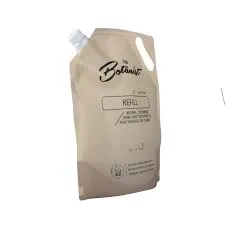uhmw pe tape
The Advantages and Applications of UHMW-PE Tape
Ultra-High Molecular Weight Polyethylene (UHMW-PE) tape has become an essential material in various industries due to its exceptional properties and versatility. This advanced polymer boasts a unique molecular structure that provides outstanding resistance to abrasion, impact, and chemicals, making it an ideal choice for applications where durability and performance are critical.
What is UHMW-PE?
UHMW-PE is a type of polyethylene characterized by its extremely long chains, which contribute to its high molecular weight, typically greater than 3 million g/mol. This unique structure endows UHMW-PE with several remarkable properties it exhibits low friction, high tensile strength, and outstanding wear resistance. As a result, UHMW-PE tape has found its way into numerous applications, ranging from industrial manufacturing to consumer products.
Key Features of UHMW-PE Tape
1. Abrasion Resistance One of the standout features of UHMW-PE tape is its excellent abrasion resistance. It can withstand harsh conditions and heavy wear, making it perfect for protecting surfaces in high-traffic areas or machinery.
2. Low Friction The low coefficient of friction of UHMW-PE makes it an ideal choice for applications requiring smooth movement. This property is particularly beneficial in applications such as conveyor systems, where minimizing friction can enhance efficiency and longevity.
3. Chemical Resistance UHMW-PE tape is resistant to a wide range of chemicals, including acids and solvents. This inherent resilience enables it to be used in environments where other materials might degrade or fail, such as chemical processing plants.
4. Impact Strength UHMW-PE tape can absorb significant impact without breaking, reducing the risk of damage to equipment and surfaces. This durability is especially beneficial in industries that require tough materials, such as construction and manufacturing.
5. Hydrophobic Properties The non-porous surface of UHMW-PE tape makes it inherently water-resistant, preventing moisture from penetrating while providing an effective barrier against contaminants.
uhmw pe tape

Applications of UHMW-PE Tape
The versatility of UHMW-PE tape allows it to be used in a wide range of applications across diverse industries
1. Manufacturing In manufacturing environments, UHMW-PE tape is often used to protect surfaces from wear caused by equipment or materials. It can line chutes, hoppers, and other surfaces prone to friction, prolonging equipment life and reducing maintenance costs.
2. Food Processing The chemical resistance and easy-to-clean properties of UHMW-PE tape make it an ideal choice for the food processing industry. It can be used to line equipment and surfaces that come into direct contact with food, ensuring compliance with health and safety regulations.
3. Automotive In the automotive industry, UHMW-PE tape is used for edge protection and sound dampening. It can be applied to the interiors of vehicles or underneath hoods to reduce noise and vibration.
4. Healthcare Within healthcare settings, UHMW-PE tape serves as a protective layer for medical equipment and surfaces. Its non-reactive nature ensures that it does not adversely affect sensitive instruments.
5. Construction In construction, UHMW-PE tape can be employed as a slide surface for moving materials or as a protective cover for adjacent surfaces during installations.
Conclusion
The exceptional properties of UHMW-PE tape—its abrasion resistance, low friction, chemical resistance, impact strength, and hydrophobic characteristics—make it a valuable material in numerous applications. As industries continue to seek durable, efficient solutions to meet their specific needs, UHMW-PE tape stands out as a versatile and reliable choice. Its continued adoption across various sectors underscores the importance of innovative materials in driving performance and reliability in today’s fast-paced industrial landscape. Whether in manufacturing, food processing, automotive, healthcare, or construction, the advantages of UHMW-PE tape will undoubtedly continue to shape the future of material usage.













